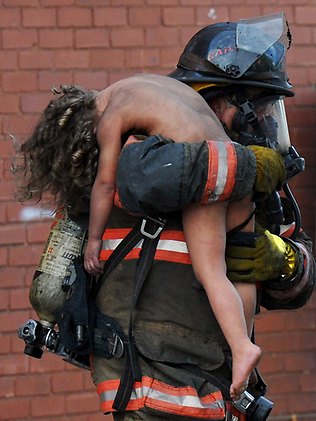What is a Savable life?
Historically UK-FRS use the term "Persons Reported" to indicate that there are believed to be person(s) in a building that are trapped and require rescuing. This is usually instigated by intelligence and normally during the initial call process. The majority of "Persons reported" calls tend not to actually have anyone requiring rescue. It may be possible to view a high rise building differently, especially if the building has a "stay put /defend in place" policy. We must start to think of "Savable life" not simply the "Persons Reported" scenario, which may not be appropriate in a tall building when deployments may take over 10 minutes. It may be more appropriate to determine whether a rescue is appropriate when on scene and actually in position to deploy a Rapid Rescue Tactic (RRT). To facilitate this a simple set of prompts may be used to assist the Incident Commander in determining if there is, potentially savable life. This better informs and correctly balances any Risk Assessment for the use of Rescue Tactics, which by there nature are carried out quickly and often without the normal Safety Team (backup hose line). A saveable life situation is one in which the FRS is assured that a person(s) remains trapped and an immediate entry into the compartment will result in rescue. Theses scenarios may include:
Any RRT poses an elevated risk to Firefighters. It may involve opening the fire compartment before backup crews are in place. This risk must be balanced with the premise that these tactics are used only when there is an definitive life-saving potential in using them.
Immediate entry
An immediate entry is one made as crews arrive at the incident floor and put in place NO Fire fighting or crew protection measures (hose lines)before attempting a rescue. Historically, in the UK, these types of rescues do occur but very rarely in the High rise environment. With the many added problems that a High rise fire create, it would, in most every circumstance, be dangerous for crews without hose lines to open an Incident compartment. A lesson that has been learnt (through firefighter deaths) is that crews opening fire compartments will inevitably alter the fire conditions in that compartment, usually for the worse. Having no hose lines means that crews have no control over the fires spread or development. There are proceedures for three person , no hose line, snatch rescues where the internal enviromental conditions in the building / compartment are monitored and ventilation controlled at the entrance door. In high rise this tactic would require the 'door control' firefighter to be in Breathing Apparatus on his own and separate from his crew. Also he would have no control or observation of other ventilation events (windows failing, wind driven incidents). This tactic can not safely be used.
One-line, "Snatch rescue" Interior ‘Snatch-Rescues’ are generally a last resort tactic and the fire should be attacked first wherever possible. There is some debate over the roll of the first hose line into the affected apartment (Primary attack line). Modern thinking is tending towards the concept that the PRIORITY for crews entering the building is fire control, NOT rescue.In this circumstance it is to be regarded not as an attack line but as a safery jet to protect the crews to enable a withdrawal if required. It is not being taken in to fire firefight with as this would further delay the any rescue. One line tactics leave no ove to control or monitor the doorway or to protect and monitor the meanes of egress. |
ARTICLE UNDER DEVELOPEMENT Jan 2013
 This link will take you away from www.highrisefire.co.uk Please be aware that we do not necessarily endorse or support the views, opinions and expressions of this site !
This link will take you away from www.highrisefire.co.uk Please be aware that we do not necessarily endorse or support the views, opinions and expressions of this site !
